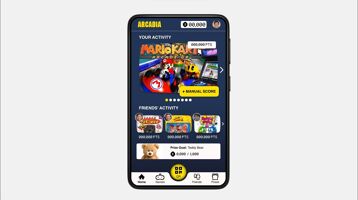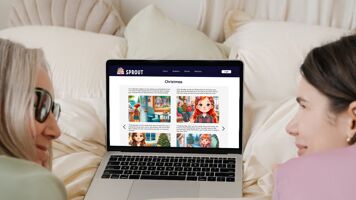AidAllyAugmented Reality for
local humanitarian aid
local humanitarian aid
Context

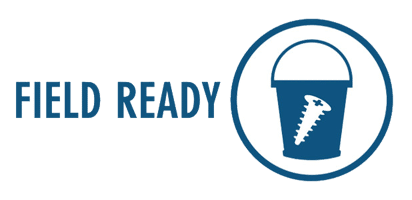
When
October - December 2023
Where
Academic project, Harvard MDE
Who
Team of 4. Design Research, Physical Prototyping,
UI/UX
Why
Natural disasters affect 101 million people and claim
68,000 lives per year, and 90% of deaths
associated to them occur in low-income
countries.
As part of Harvard's Master of Design Engineering, my group and I partnered with Field Ready, a global NGO working in disaster relief and preparedness. Together, we created AidAlly, an app dedicated to helping craftsmen assemble products made with locally sourced materials through Augmented Reality instructions. As a use-case, we focused on hands-free crutches.
As part of Harvard's Master of Design Engineering, my group and I partnered with Field Ready, a global NGO working in disaster relief and preparedness. Together, we created AidAlly, an app dedicated to helping craftsmen assemble products made with locally sourced materials through Augmented Reality instructions. As a use-case, we focused on hands-free crutches.
Understanding the challenge
When a natural disaster strikes a low-income countries,
between 60-80% of international aid is spent on logistics,
and it usually leaves after 6 weeks of support.
Organizations like Field Ready are trying to change the
paradigm by bridging the gap between the local
manufacturers, the suppliers and the communities.
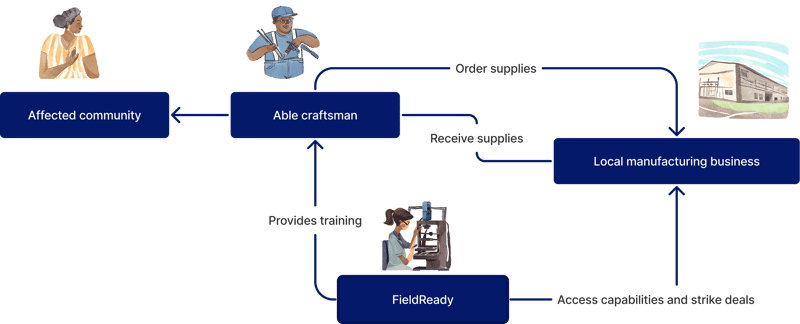
 Meet John!
Meet John!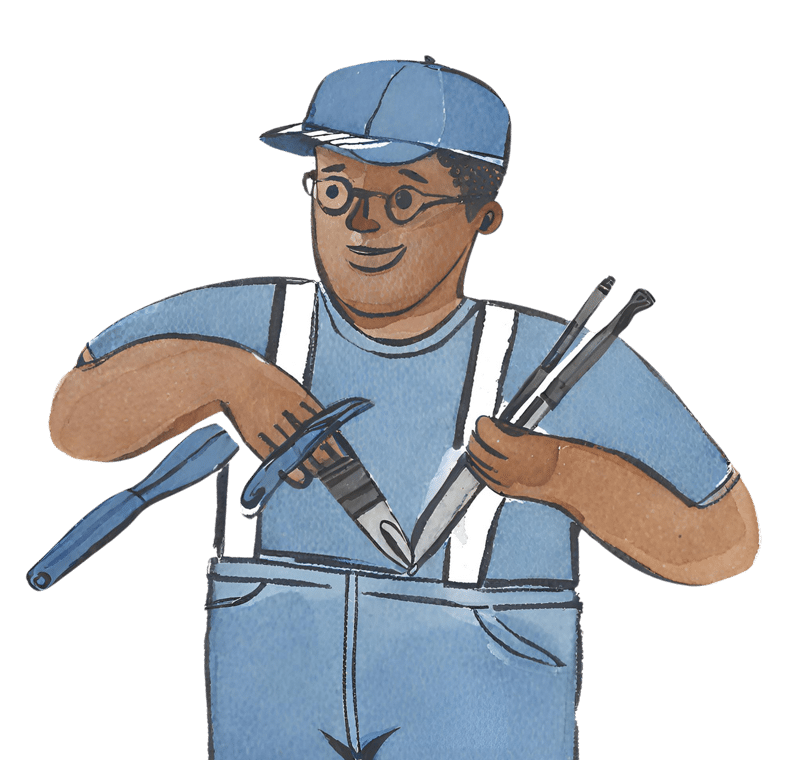 Design principlesBased on our talks with Field Ready and the commercial
precedents for hands-free crutches, we made these 4 design
principles the cornerstones of our product:
Design principlesBased on our talks with Field Ready and the commercial
precedents for hands-free crutches, we made these 4 design
principles the cornerstones of our product: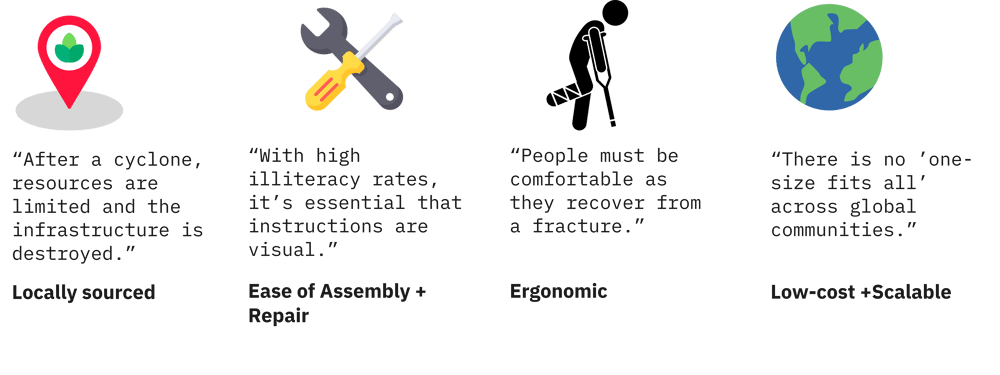 Why focus on hands-free crutches?
Why focus on hands-free crutches?



John is our persona for the project, a local
craftsman from Fiji. He has been in contact with Field
Ready before, and is ready to supply aid when disaster
strikes.
"Once people [like John] receive the products from local manufacturers, they often struggle to assemble and install them. Then they call us [Field Ready] to get help because they know it's us who designed who designed them [the products]."
- Charles Barrete, Innovation Lead at Field Ready
"Once people [like John] receive the products from local manufacturers, they often struggle to assemble and install them. Then they call us [Field Ready] to get help because they know it's us who designed who designed them [the products]."
- Charles Barrete, Innovation Lead at Field Ready
 Why focus on hands-free crutches?
Why focus on hands-free crutches?1
Orthopedic injuries are the most frequent in natural disasters
2
Foot and ankle are the 3rd most common fractures
3
Traditional crutches don't let you use your hands
Prototyping
Initially, we explored the idea of creating a solution
that would allow users to found equivalences between
components of products and found objects in natural
disasters. This idea was scrapped due to concerns about
the safety of the products that could be built from these
objects.
We went on with the concept of identifying the right components of a device with Computer Vision and leveraging Augmented Reality (AR) to guide craftsmen through the assembly. We organized a quick test in Home Depot, where we used Google's Teachable Machine to build a small machine learning vision model with images of Home Depot products, though we ended up using the AR framework to identify objects with the same shape and size as the 3D models used for the AR guide.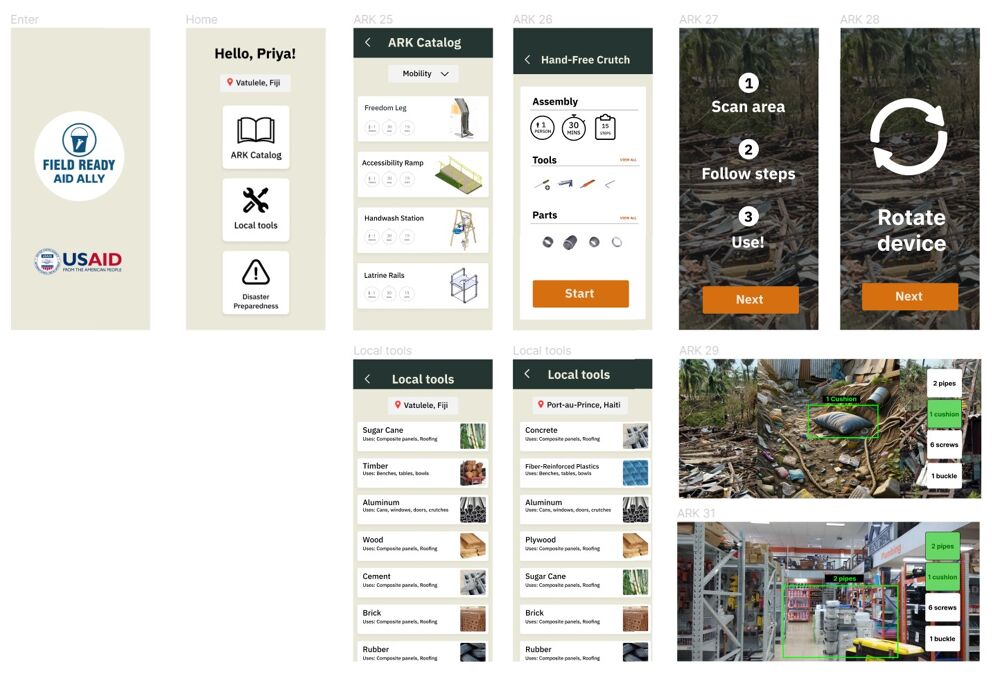 Early Figma prototypes of the AidAlly appBased on the commercial precedents for hands-free
crutches (iWalk and Freedom Leg), we produced several
prototypes with varying degrees of fidelity: two for the
iWalk concept, two for the Freedom Leg concept and one
that mixed both concepts. Each iteration helped us to get
closer to the final solution.
Early Figma prototypes of the AidAlly appBased on the commercial precedents for hands-free
crutches (iWalk and Freedom Leg), we produced several
prototypes with varying degrees of fidelity: two for the
iWalk concept, two for the Freedom Leg concept and one
that mixed both concepts. Each iteration helped us to get
closer to the final solution.
In our prototypes, we considered the resources available in Fiji through local manufacturers (aluminum, rubber) and Field Ready's mobile makerspaces, which could provide any 3D-printed parts.
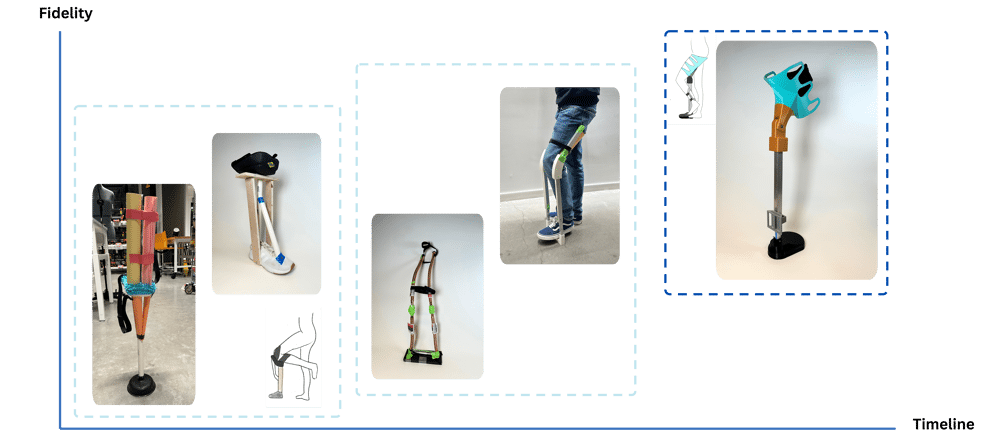 Prototype evolution
Prototype evolution
We went on with the concept of identifying the right components of a device with Computer Vision and leveraging Augmented Reality (AR) to guide craftsmen through the assembly. We organized a quick test in Home Depot, where we used Google's Teachable Machine to build a small machine learning vision model with images of Home Depot products, though we ended up using the AR framework to identify objects with the same shape and size as the 3D models used for the AR guide.
 Early Figma prototypes of the AidAlly appBased on the commercial precedents for hands-free
crutches (iWalk and Freedom Leg), we produced several
prototypes with varying degrees of fidelity: two for the
iWalk concept, two for the Freedom Leg concept and one
that mixed both concepts. Each iteration helped us to get
closer to the final solution.
Early Figma prototypes of the AidAlly appBased on the commercial precedents for hands-free
crutches (iWalk and Freedom Leg), we produced several
prototypes with varying degrees of fidelity: two for the
iWalk concept, two for the Freedom Leg concept and one
that mixed both concepts. Each iteration helped us to get
closer to the final solution.In our prototypes, we considered the resources available in Fiji through local manufacturers (aluminum, rubber) and Field Ready's mobile makerspaces, which could provide any 3D-printed parts.
 Prototype evolution
Prototype evolutionSolution
Object Detection FrameworkThe ARKit scanner is developed using frameworks and API
provided by Apple. This is used to scan the real world
object that we want to detect.
During the scanning process, a .arobject file is created, which contains the spatial features essential for recognition. This process typically involves compiling multiple scans to ensure the object is detectable from various perspectives.
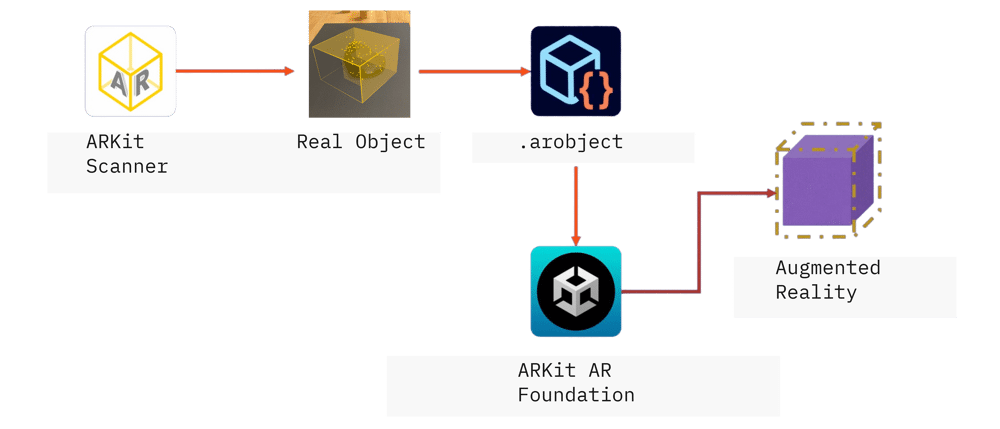 Extended Reality (XR) Foundation
Extended Reality (XR) Foundation
Our AR app used XR Subsystems to form the technical foundation. The display manages how AR content is rendered on a device, integrating virtual objects with the live camera feed.
The input handles user interactions with the AR environment, translating touch gestures into actions within the app. The camera controls the device camera's AR capabilities, like tracking movement and understanding spatial orientation.
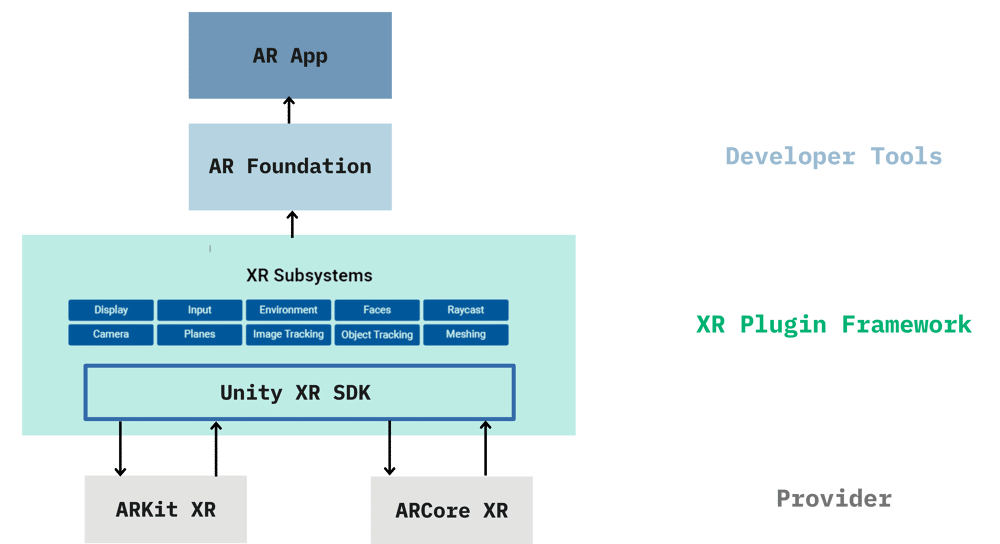 Exploded View of the Hands-Free CrutchThe crutch is made for:
Exploded View of the Hands-Free CrutchThe crutch is made for:
Adjustability: three adjustable points ensures the crutch adapts to different heights and is reusable.
Local Materials: Field Ready has mobile makerspaces patrolling Fiji, manned by locals who are able to supply the 3D-printed parts when needed. The rest of parts are made of available local materials like aluminum and rubber and pieces from Home Depot-like stores. They are all pieces that could be resupplied in case of
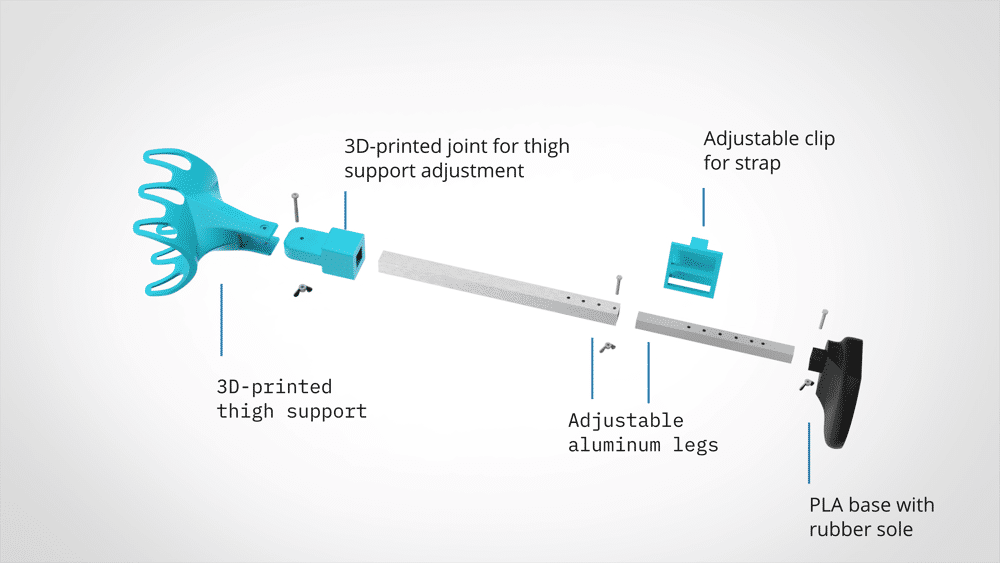
During the scanning process, a .arobject file is created, which contains the spatial features essential for recognition. This process typically involves compiling multiple scans to ensure the object is detectable from various perspectives.
 Extended Reality (XR) Foundation
Extended Reality (XR) FoundationOur AR app used XR Subsystems to form the technical foundation. The display manages how AR content is rendered on a device, integrating virtual objects with the live camera feed.
The input handles user interactions with the AR environment, translating touch gestures into actions within the app. The camera controls the device camera's AR capabilities, like tracking movement and understanding spatial orientation.
 Exploded View of the Hands-Free CrutchThe crutch is made for:
Exploded View of the Hands-Free CrutchThe crutch is made for:Adjustability: three adjustable points ensures the crutch adapts to different heights and is reusable.
Local Materials: Field Ready has mobile makerspaces patrolling Fiji, manned by locals who are able to supply the 3D-printed parts when needed. The rest of parts are made of available local materials like aluminum and rubber and pieces from Home Depot-like stores. They are all pieces that could be resupplied in case of

 Back to Top
Back to Top
